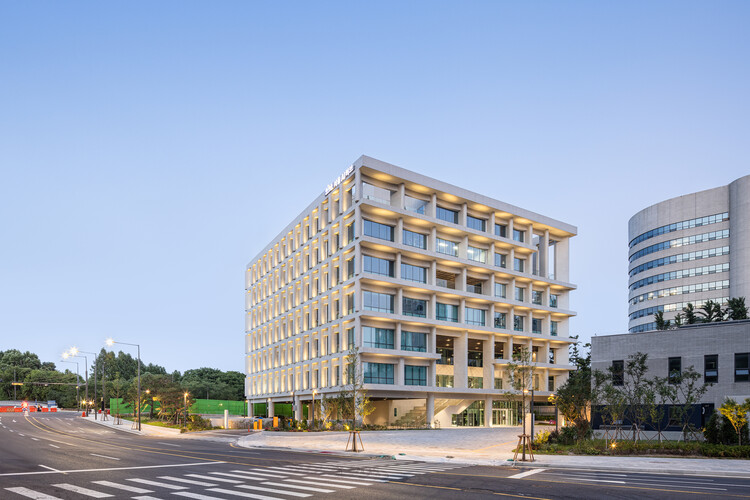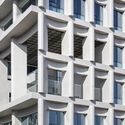
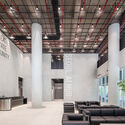
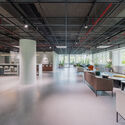

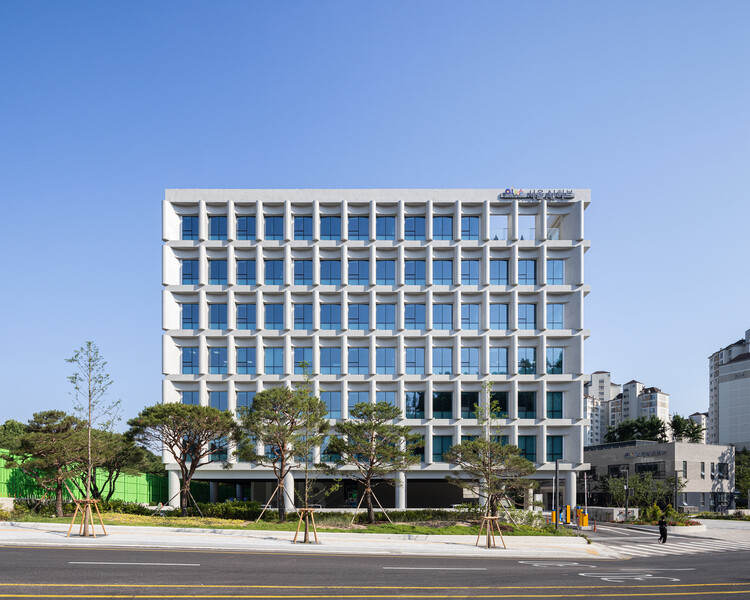
- Area:
10100 m²
Year:
2024
-
Lead Architects:
Seung Teak Lee, Mi Jung Lim
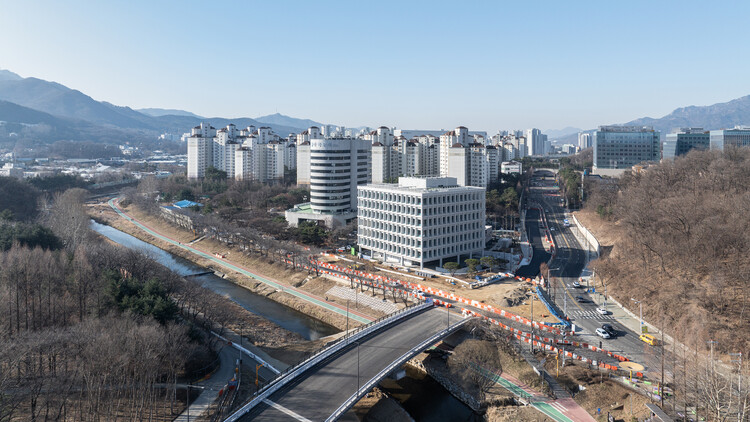
Text description provided by the architects. Georgia’s Savannah and New York’s Manhattan have very different approaches to forming and using parks within the city. Savannah adopts the form of an absorbing Pocket Park, placing several small parks at regular intervals to provide nearby residents with everyday rest. In contrast, Manhattan’s Central Park is large and in the center of the city, utilized as an integrated park that the entire public shares and enjoys, allowing for various activities and events. This large park integrates the areas of roads within the city’s grid into the park, saving unnecessary movement and serving as a large shared and social space that accommodates various activities and events.
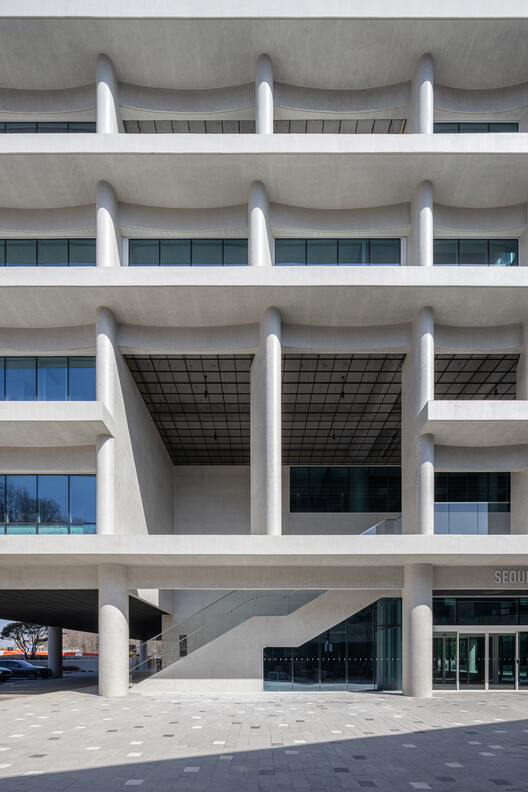
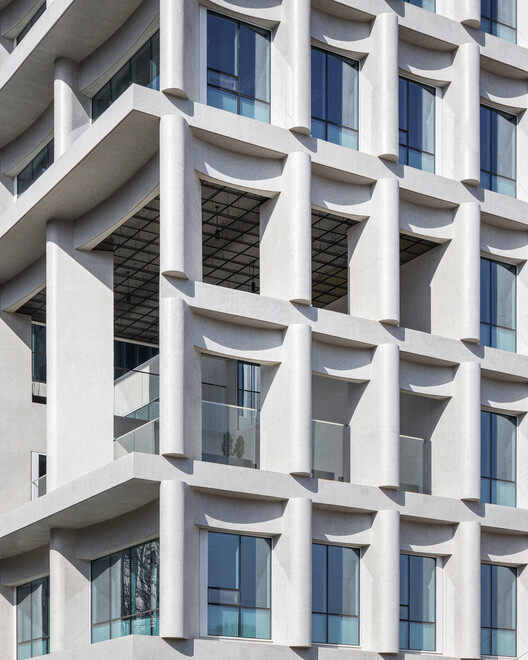
Mega Floor is a proposal for a new prototype of shared office facilities. Typically, office spaces are arranged around a core, with the four sides facing the outside. Shared and social spaces are relegated to the central area, which is small and environmentally isolated. In the framework of AI-centered 4th industrial revolution office spaces, considering cooperation with various industries, sharing, and synergy, the size of that area and its environmental performance need to be enhanced.
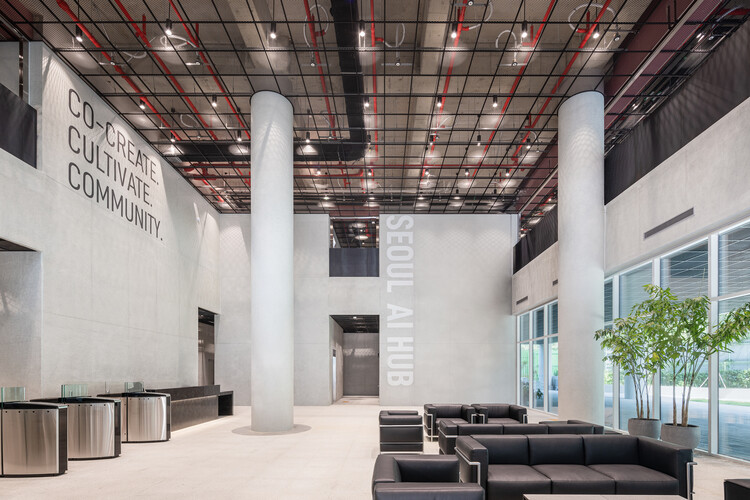
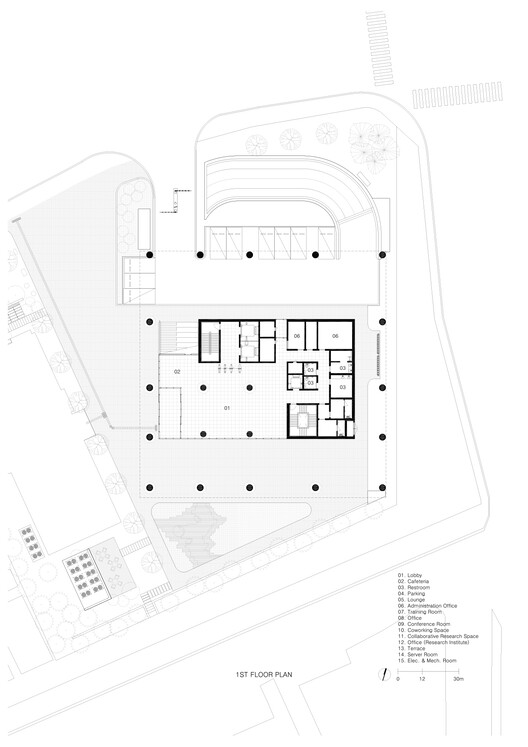
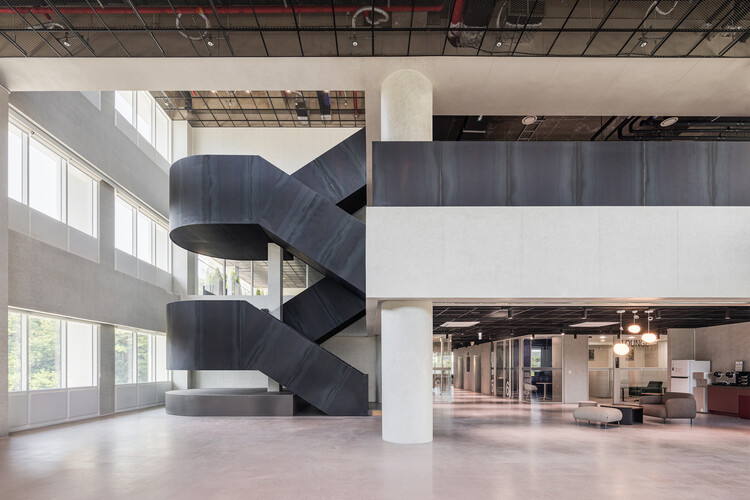
Mega Floor applies the expanded concept of ‘sharing’ to the plan, cross-section, and external spaces. Around an L-shaped core, office spaces are arranged to the north and east, offering good views for resident companies. Large, unspecified shared spaces (neutral spaces) are planned on the south and west, where sunlight is abundant. On one side of the core, this space is integrated with meeting rooms and focused work areas, and its location is adjusted based on how the inter-floor shared space is utilized.
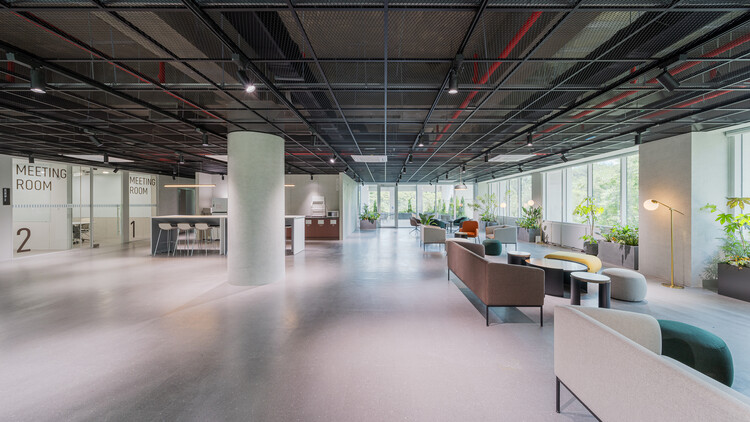
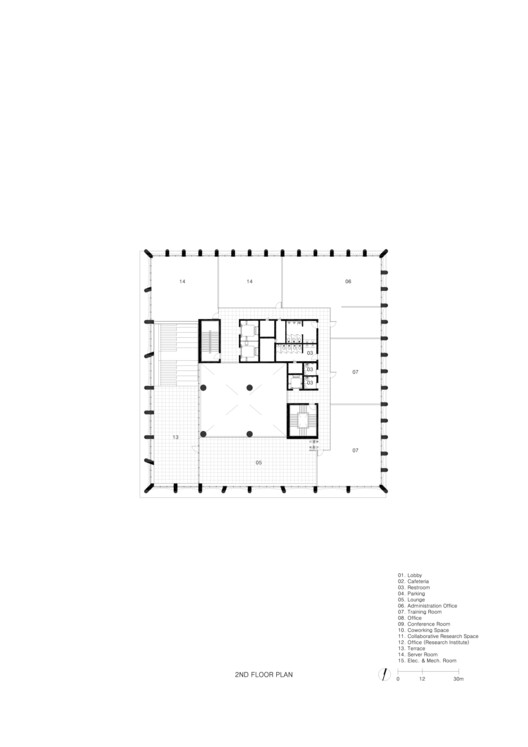
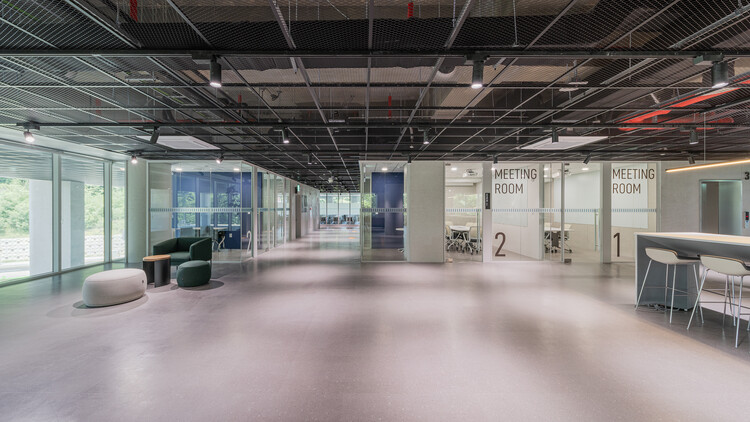
Ultimately, the hierarchy on each floor plan extends from private and secure areas to public and open spaces, linking resident companies (Private/Secured), shared office space in the core zone (Semi-Private/Semi-Secured), shared spaces (Public/non-secured), and external spaces. This approach is also applied in the cross-section, where shared spaces on two floors are combined to expand sightlines and circulation between floors. This is linked to a void that penetrates the entire floor, regulating lighting, temperature, and humidity, reducing energy consumption while providing a comfortable indoor environment.
